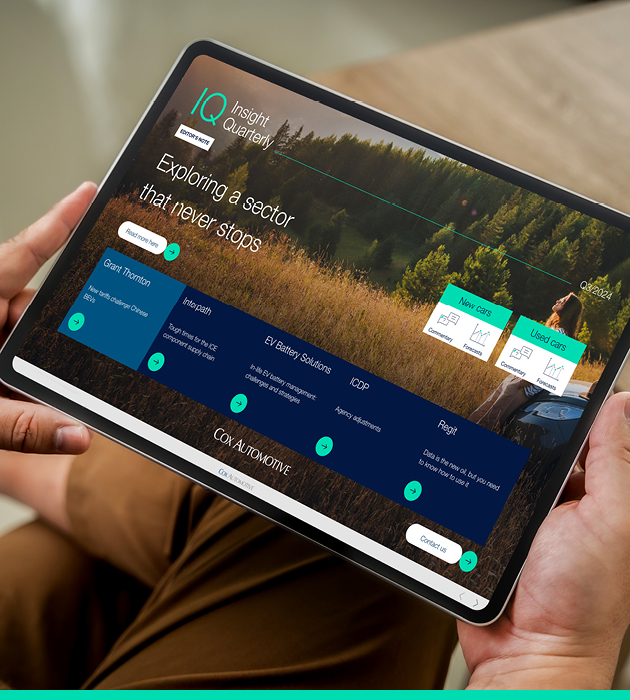Changing consumer behaviours, technological advances, and our relationship with how we view vehicle ownership, is fuelling a monumental growth in the mobility market and is fundamentally changing the vehicle lifecycle forever.
But as the mobility market grows and our industry navigates the challenges this presents, we are also contending with perhaps the biggest change to transport since the personal car became common in the early 20th century: electric vehicles.
Governments around the world have now legislated for the ban of new internal combustion engine cars, some from as early as 2030. To increase the uptake of EVs at scale presents a whole host of challenges that have been widely discussed and that we won’t go into in this blog. But as EVs become more common, we must start to think about how these new vehicles will be used and managed in the growing mobility space.
EVs are an enabler of mobility
By 2040, Bloomberg estimates that there will be in the region of 323 million electric vehicles worldwide – a significant shift in under two decades that will see them make up just under two-thirds of total vehicle numbers.
Over the next decade, we will see more and more EVs across every aspect of our lives, whether that’s in ride-hailing services like Uber where electric and hybrid vehicles are already common, or other areas such as local council services, home delivery and public transport.
The infrastructure needed to support this growth stretches beyond charging points. In a market where vehicles increasingly have a single owner but multiple users, we need to consider how these vehicles will be collected, moved, stored and prepped between each use.
Robust vehicle handling processes are needed, enabled by large facilities and workforces with the right skills. EVs present new challenges for vehicle handlers as the technology isn’t currently understood by many, so it’s clear that workforces need to be upskilled to efficiently manage these vehicles at scale.
We also must consider the consequences of technology obsolescence. The current pace of development in the EV space is ferocious compared to ICE vehicles and we’re constantly seeing new models coming out which are pushing the boundaries in what we thought was possible in terms of battery range. Not only must the vehicle services industry stay on top of these developments to ensure it can always cater to the growing EV market, but we must also consider how this impacts the used market down the line. Will the current crop of EVs be obsolete in five or six years’ time as new technology comes through? Effective battery lifecycle management is needed to ensure this doesn’t happen.
Battery lifecycle management
Research in the US and UK shows that consumers are still sceptical about how valuable and useful an EV battery will be after multiple years of use. But if the mobility market is to grow in line with a rise in the number of EVs on our roads, then we must be able to accurately measure the quality of the battery and articulate that to customers.
We believe an independent, third-party battery health score will be a critical enabler to used EV adoption and growth, driving both transparency and confidence in used EV transactions. Early trials indicate that EVs sold with a battery health check achieve between 2% and 6% higher resale values.
We must also consider how we effectively manage a situation where a user has a faulty battery. Where does that vehicle go? How is the battery stored and analysed safely? These are some of the questions we’re working with customers to answer, and that are influencing our investments in this space to be able to cater for our customers’ evolving needs.
We recently acquired Spiers New Technologies, a leading full-service provider for vehicle batteries. SNT’s experts talk about the ‘4R’ model in terms of battery lifecycle management – repair, remanufacture, refurbish and repurpose - and we believe optimising and maximising the value of every battery is vital.
At Cox Automotive we are extending the EV battery lifecycle through a closed-loop system that reduces the environmental impact of metals mining and supports the extension of EV battery first lives and end-of-life reuse and recovery treatments. Some of the projects we’re involved in include looking at how to repurpose those batteries to provide decentralised power solutions for housing and commercial buildings.
Whatever the solution, it’s clear as an industry we need to be equipped to deal with a growing and aging EV parc, and the challenges that presents along the way.
The ‘mobility future’
The mobility market isn’t just something that’s coming, it’s already here. But it’s still a sector in its infancy and there’s work to be done whether that’s adapting to a changing vehicle lifecycle, or enabling EVs to slot into the Mobility as a Service (MaaS) network.
But the benefits for those businesses that grasp these opportunities are huge. Consumer needs are changing and by investing in mobility now, you are future-proofing your operations and ensuring enhanced customer connections and improved customer experience tomorrow.
The challenges are both physical and digital. Software platforms are needed to connect every opportunity, but physical services are needed to deliver them. After all, in this increasingly digital world where a person can order a car to be delivered to their doorstep in just a few clicks, we must remember that you can’t store, maintain or drive vehicles in the cloud.
Collaboration between manufacturers, fleets, retailers and the entire automotive supply chain is needed in order to realise the potential of the mobility market, but it’s an exciting future, rich with opportunity.
Cox Automotive Mobility is the future proof partner of choice for customers exploring and operating new mobility services. From short term rental and vehicle subscription software platforms to electric vehicle solutions and beyond, our mobility portfolio helps our customers flex their operations in this fast-moving landscape and sustainably future proof their businesses.
Click here to learn more.



